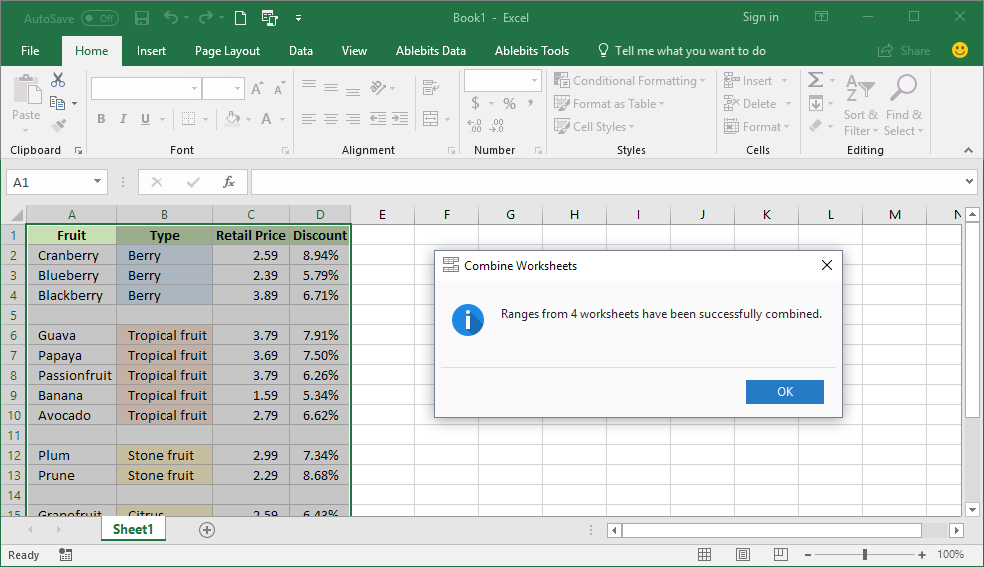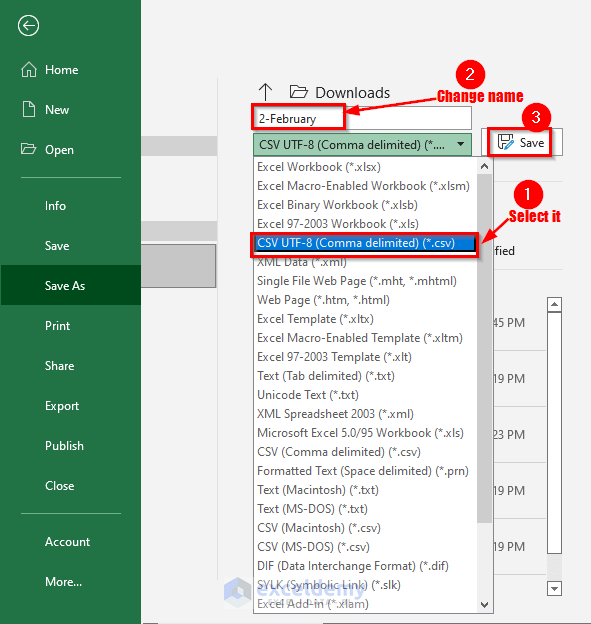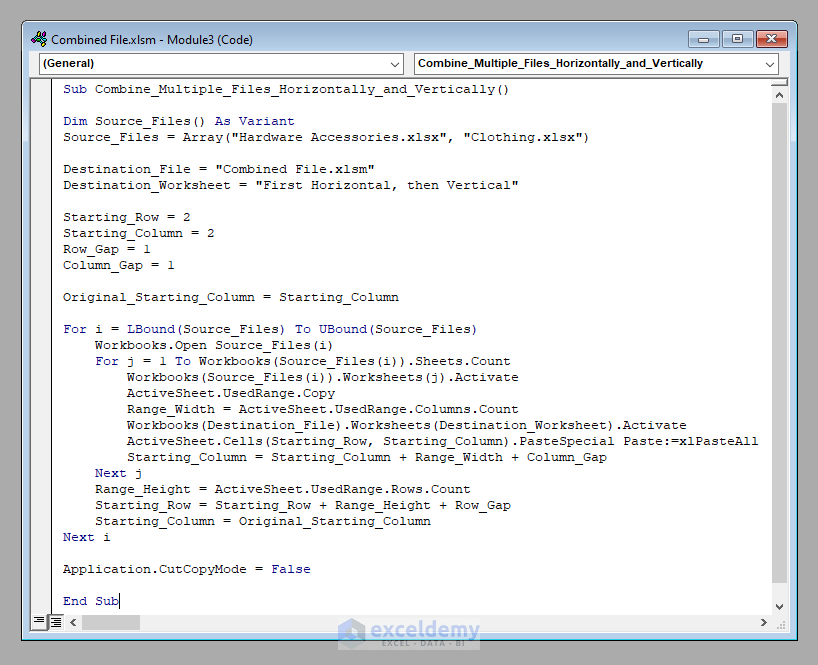5 Easy Ways to Merge Excel Sheets into One

Whether you're working with data from different departments, consolidating project information, or trying to streamline your reporting process, merging Excel spreadsheets can significantly boost your efficiency and data accuracy. Excel, being a powerful tool for data analysis and manipulation, offers multiple methods to combine data from separate sheets or workbooks into one cohesive document. Here, we'll walk through five practical ways to merge Excel sheets, ensuring that you can select the method best suited to your needs.
1. Using Consolidate Function

Excel’s Consolidate feature allows you to combine data from multiple sheets or ranges into one place. This method is particularly useful for summarizing data or when the structure of your sheets is consistent.
- Open a blank worksheet where you want to consolidate the data.
- Navigate to the Data tab and click on Consolidate.
- In the Function box, choose the type of calculation you want to perform (e.g., SUM, AVERAGE).
- Select your first range in the Reference box, then click Add.
- Repeat for all ranges you want to consolidate. If your sheets are in different workbooks, you’ll need to manually add each range.
- Choose whether to create links to the source data, and decide on the Top row or Left column for labels.
- Hit OK, and Excel will consolidate your data.
🔗 Note: The consolidate feature works well for summary reports but doesn’t merge sheets in the sense of copying all data together. Instead, it aggregates data based on common labels.
2. Copy and Paste

Perhaps the most straightforward method, albeit time-consuming for large datasets, involves copying and pasting data from one sheet to another:
- Open your source workbooks or sheets.
- Select the range of cells you want to merge.
- Copy (CTRL+C) the data.
- Switch to your destination workbook or sheet, and paste (CTRL+V) the data where you want it.
- Repeat the process for all the sheets you wish to merge.
3. Power Query

For those with Excel 2010 or later, Power Query is a game-changer when it comes to data manipulation:
- From the Data tab, click on Get Data > From Other Sources > From Table/Range or From File > From Workbook to load your Excel files.
- Load the data from different sheets or files into Power Query Editor.
- In the Editor, you can transform data, remove duplicates, and append or merge queries.
- After making your transformations, choose Close & Load to bring the merged data into Excel.
| Step | Description |
|---|---|
| Load Data | Load your Excel data into Power Query Editor. |
| Transform Data | Adjust or clean data as necessary. |
| Merge or Append Queries | Use the 'Append Queries' or 'Merge Queries' options to combine data from multiple sources. |
| Load Result | Close the Editor and load the result back into Excel. |

4. VBA Macro

For those who are familiar with Visual Basic for Applications (VBA), creating a macro can automate the process of merging sheets:
- Press ALT+F11 to open the VBA editor.
- Go to Insert > Module to add a new module.
- Write a VBA script to loop through workbooks or sheets and copy data into your master sheet. Here’s a basic example:
Sub MergeSheets()
Dim wb As Workbook, ws As Worksheet, lastRow As Long, x As Integer
Set wb = ThisWorkbook
x = 1
For Each ws In wb.Worksheets
If ws.Name <> “Master” Then
lastRow = ws.Cells(ws.Rows.Count, 1).End(xlUp).Row
ws.Range(“A1”).Resize(lastRow, Columns.Count).Copy Destination:=wb.Sheets(“Master”).Cells(x, 1)
x = x + lastRow
End If
Next ws
End Sub
- Run the macro by pressing F5 or from the Excel ribbon.
5. Using Excel’s External References

You can also link data between workbooks to create a dynamic merge:
- Open both workbooks.
- In your destination workbook, select the cell where you want to start the merge.
- Enter an external reference formula like
=[‘Source Workbook.xlsx’]Sheet1!A1. - Copy this formula down and to the right to merge data across multiple cells.
Throughout the process of merging Excel sheets, several key points stand out. Each method provides different advantages, depending on your specific needs. The Consolidate function is excellent for summarized reports, whereas Power Query excels in data transformation and handling multiple data sources. VBA offers automation and can be customized to complex requirements, while copy and paste is straightforward but manual. External references provide a dynamic link, ensuring that data updates automatically when source sheets change.
What are the advantages of using Power Query for merging sheets?

+
Power Query offers scalability, data transformation capabilities, and the ability to refresh data sources, making it ideal for managing large datasets and complex data structures.
Can I merge sheets from different file formats?

+
Yes, with Power Query, you can merge data from various file formats like CSV, text files, SQL databases, and even web pages.
How can I ensure data consistency when merging?

+
Use Power Query’s transformation steps or write a VBA script to check for data consistency before merging. Also, ensure your source sheets follow a uniform structure.



